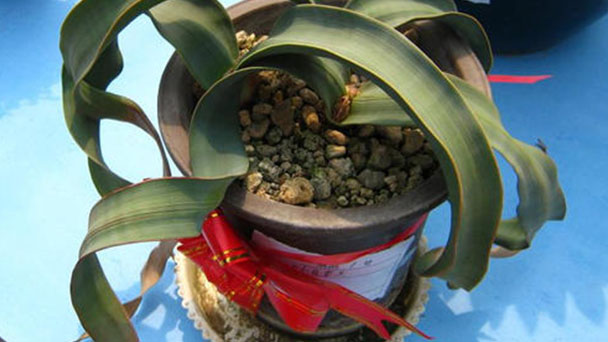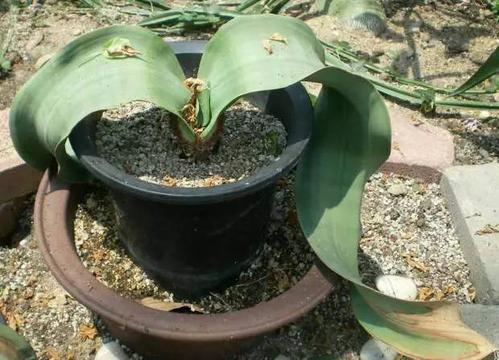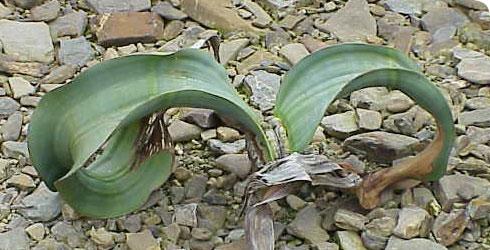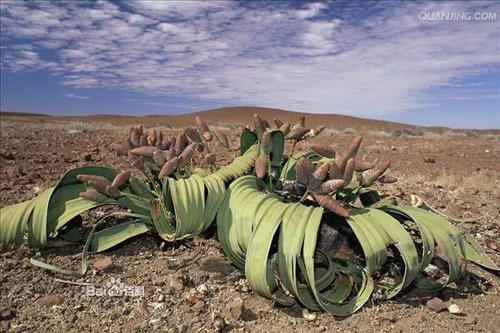How to care for Welwitschia Mirabilis
Written by Maggie
Jan 20 2021

Welwitschia Mirabilis grows well in the wild and is difficult to breed artificially. How to care for Welwitschia Mirabilis when growing it? Let’s take a look!

How to care for Welwitschia Mirabilis
Overcoming acclimation
Following the principle of growing in the environment of origin as far as possible, we choose the original and old basins of Welwitschia Mirabilis as best as possible. Such benefits include:
1. avoid acclimation, improve survival rate, and then static management.
2. If you have introduced a lump of soil, you can look at the native soil and test the pH to select a similar fill.
Flowerpot can be selected as a breathable and hydrophobic large deep basin. The old pot is especially good, with antique beauty, but we need to pay attention to disinfection. The new basin can be used after being drenched or soaked.

Water Care for Welwitschia Mirabilis
After planting, stop the water supply. If the root injury is minor, it can be watered every few days. After that, we can often use dip basin law to give water, namely basin bottom puts shallow basin, shallow basin inside add some of high grade purify water, imitate the circumstance that desert has groundwater below. The commonly used dip basin water supply effect is very good, but to prevent over - moisture. Water from the basin soil above the interval should be very long, but also from time to time spray.
In particular, it requires strict water quality, and you need to use as pure water as possible, like other flowers commonly used soya-bean milk water, eggshell water, milk water and so on are not desirable.
Planting soil for Welwitschia Mirabilis
Good lighting is required. The climatic conditions are good and the cultivated soil is good. Welwitschia Mirabilis are picky about soil, and in theory require half a mineral, nearly 5 percent organic matter, about 20 percent air and 25 percent water. Good air permeability, hydrophobic fertilizer, sterile without pests, neutral as the principle. Substrates must be subjected to high temperature (such as microwave, steaming, hot sun exposure) or drug treatment, sterilization and pest control.
Optional volcanic rock matrix (e.g., called the "universal" out of the clay of red jade soil), ceramsite tauscha unfavorable (small), calcine soil, river sand or coarse grain of the (clean), peat soil (huang jie color of thick peat), rice chaff ash (born of avoid by all means to burn too, some as well), coconut shell, coconut chaff, bark (pine because it contains turpentine, carefully) can also be, charcoal piece is good too. Others such as activated carbon, appropriate bone powder, insecticidal fungicide, granular fertilizer can be used.
The following substrates should be avoided: random dirt, when slag reaches 30%, will seriously hinder root growth; Sea sand contains salt, should not be used: fine sand water, not breathable, also inappropriate.
The cultivated climate is critical, especially temperature, rainfall and light. Even the climate in Windhoek, the capital of Angola, which is far from home, is far from ours. The capital is located on the central plateau with high terrain, so it is not hot. In summer, from November to February of the following year, the temperature difference between day and night can reach more than 10℃, and precipitation is scarce. However, it is difficult for us to optimize microclimate because of the high temperature in summer, small temperature difference between day and night, much rain, and poor illumination throughout the year.

How to propagate Welwitschia Mirabilis
The Welwitschia Mirabilis does not propagate easily. The seedling stage has two young leaves (whether tissue culture remains to be explored), about 3 years replaced by two permanent large leaves that do not wither and change. It is divided into male and female plants. It is difficult to collect seeds and sow them again, so mail order seeds are more feasible. Leaf insertion, plant division, crown cutting, grafting and other methods are difficult to use.
Therefore, the most reliable way of reproduction is to buy seeds, and then through the way of sowing reproduction, their own family centenarian orchid seed basically sowing will not succeed.
Latest Updated
- Benefits of Bugleweed - 7 Science-backed Health Benefits
- Bugleweed Dangers & Side Effects - Is It Poisonous?
- How to Plant Evergreen Trees - What You Should Know
- When to Plant Evergreens - Grow Guide for Evergreen Trees
- 12 Wonderful Evergreen Shrubs for Your Garden
- 12 Popular Evergreen Plants with Pictures for Beginners
- When And How To Prune A Lilac Bush Like a Pro
- How to Grow & Care for Lilac Vine (Hardenbergia Violacea)
- Japanese Lilac Tree (Syringa Reticulata) Care & Propagation Guide
- Shumard Oak Pros and Cons - What to Know
Popular Articles
- Winter maintenance of Antirrhinum Majus
- How to Grow Terminalia Mantaly Tree
- How to Grow and Care for Crossostephium Chinense
- How to grow Antirrhinum Majus in spring
- Peristeria Elata (Dove Orchid) Profile: Info & Care Guide
- Underwatered Snake Plant (Sansevieria Trifasciata) - Signs And How To Fix
- How to Care for Brazilian Jasmine Plant (Mandevilla Sanderi)
- How to Grow & Care for Graptopetalum Purple Delight in Summer
- Rosa Chinensis (China Rose): Plant Growing & Care Tips
- How to Care for Baby Sun Rose (Aptenia Cordifolia)